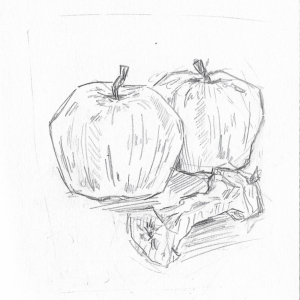Dilla Time: Profile of a Musical Genius
Falcon Rating: 5/5 Falcons
June 23, 2023
There are few figures in hip-hop who were more influential than J Dilla. Born James Dewitt Yancey in 1974, J Dilla was a producer and rapper whose work in the 90s and early 2000s revolutionized the way music was made. Using samplers like the Akai MPC and the Emu SP-1200, Dilla created beats like no one had ever heard before. Going into the late 1990s, the prevailing beat-making wisdom was that nothing should be loose. Samplers have a feature called quantization that will fix minor timing errors, which was used to create clean, rigid beats at the time. However, J Dilla rejected this musical uniformity, realizing that imperfections make music human. Using a variety of techniques, such as turning off quantization, slightly delaying certain elements of the beat, or even mixing samples with different time signatures, Dilla created a distinct time feel which is still mimicked today. In doing so, he made countless classics, helped develop the genre of Neo-Soul, and laid down the foundation for what we call Lofi Hip-Hop.
But he was gone as quickly as he arrived. In 2006, after a mere decade in the game, James Yancey died of Lupus and TTP-related complications. The legacy and body of work that Dilla left from his short stint in the industry has made him a legend. But who really was J Dilla?
Dan Charnas attempts to answer exactly this question in his book Dilla Time. Charnas, an NYU professor and former journalist with the seminal hip hop magazine The Source, details the life and career of J Dilla, piecing together information from interviews, documents, and records to truthfully tell his story. The book explores the music theory that makes Dilla’s beats so amazing, but more importantly, it talks about who he was as a person. In the years since his death, J Dilla’s music has acquired a cult following of fans who promote him to a godlike status. This attitude is simplistic and, frankly, dehumanizing. One of the major strengths of this book is that it is no puff piece, painting J Dilla as a three-dimensional person who made just as many mistakes as any of us.
Dilla Time is a captivating read, full of anecdotes that fans will adore. Take, for example, the fistfight which occurred between members of The Pharcyde when one of them accused the other of ruining Dilla’s beat, or the time J Dilla made the instrumental for Erykah Badu’s “Didn’t Cha Know” on the spot. The book is never tedious, and it approaches each chapter of Dilla’s life with knowledge and finesse.
If I had one criticism of this book, I would say that it might get too detailed at times, at the risk of distracting from the main plot. Other than that, it’s one of the greatest books I have read about hip-hop. I recommend this book to anyone who enjoys hip-hop music and advise everyone to be on the lookout for a Questlove-produced documentary adaptation coming soon.








